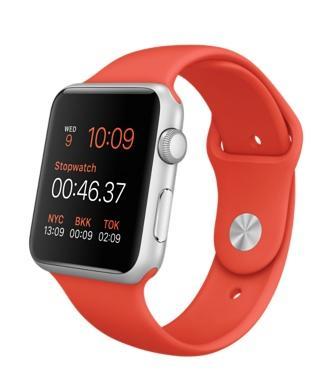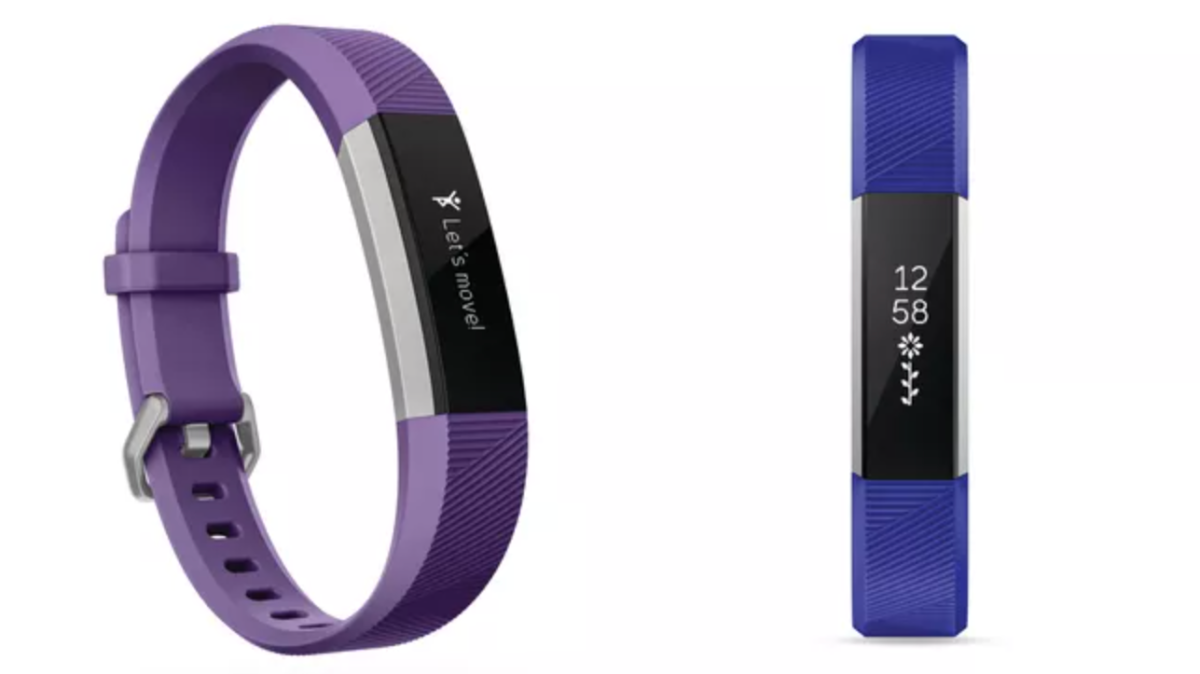Smart watches and fitness trackers
Smart watches are popular – if, in many cases, very expensive – accessories that do far more than just tell you the time. They connect to a phone via Bluetooth and enable you to manage things like music, calls, messages, alarms, GPS tracking and other apps from your wrist.
Fitness trackers are similar. The have a digital watch face, but also keep tabs on exercise levels, heart rate, location and sleep quality, to help support health and wellbeing. Some are able to share notifications from a smartphone or device they are paired with. Many smart watches offer fitness tracking as a built-in app.
So what do you need to know – and how do you set them up safely?
Here’s advice for the most popular models, the Apple Watch and the FitBit Ace 2, as well as what else parents should be aware of about tech wearables.
Check out our comprehensive guide for support on setting up new tech.
The Apple Watch launched in 2015 and has since become not only the leading smartwatch, but the most popular watch overall worldwide.
Features include fitness tracking, health monitoring, managing notifications from your phone, setting alarms and streaming music. If you choose a model with LTE connectivity, you can make calls and send or receive messages without needing a smartphone nearby.
Users can also access the Siri virtual assistant, the watchOS App Store and Apple Pay, which creates additional risks to be aware of. Many schools have policies in place restricting use of smartwatches, thanks to Siri’s ability to source answers to questions online.
Parental controls
Think of the smart watch as more like a wearable smartphone, rather than a watch that lets you know if you’ve missed a call – and consider the same things you would with a mobile device, like whether you need to restrict or manage access to certain content, downloads and purchases.
You can set up your child’s Apple Watch to connect to your iPhone, and then use the Apple Watch app to manage its settings.
Once the devices are paired, you can manage communications limits, notification settings, restrict explicit content or purchases, set an emergency contact, schedule down time or limit access to certain features during school hours - and even set a timer for handwashing. You can also view activity, health and location information for the Apple Watch wearer.
Managing via App
First, you need to have set up Family Sharing on your iPhone. This connects Apple devices like smartwatches, phones and tablets within a family group.
Turn the Watch on, and place it near the iPhone you want to pair it with. Open the Apple Watch app on your iPhone and tap All Watches > Pair New Watch > Set Up for a Family Member > Continue. Position the iPhone so that the Apple Watch appears in the viewfinder in the Apple Watch app and tap Set Up Apple Watch, then follow the instructions on screen.
Once you’ve paired the devices, set restrictions by opening the Apple Watch app, tapping All Watches and selecting the Watch you want to manage. Tap Done > Screen Time > Screen Time Settings > Turn on Screen Time, then select the settings you want for Downtime, App Limits and Content & Privacy Restrictions. You can also create a Screen Time passcode to prevent anyone else changing these settings via your iPhone. This menu can also show you a Screen Time activity report for the watch.
You can also access these controls by going to your iPhone’s Settings > Screen Time > tapping the family member's name and choosing a setting to manage.
Notifications
The Apple Watch was designed to send the wearer notifications whenever they get an email, message or social media notification. This can be helpful, especially if you don’t have your phone on you – but if your child has both a watch and a smartphone, this could become a constant distraction.
You should also be aware that if you pair your child’s watch with your phone, the watch will display notifications about calls or messages you receive. You can disable these notifications by going to Settings > Notifications.
Virtual assistant
You can access Apple’s virtual assistant, Siri on Apple Watch, either by raising your wrist and speaking to the watch, or by starting your request or instruction with the words, “Hey Siri”. Just like on a smartphone, tablet or smart speaker, Siri can read out a response or answer.
You don’t need to be connected to a mobile network to use Siri, only to the internet – so even if your child doesn’t have their own device, if the Apple Watch is connected to WiFi, they can access this virtual assistant.
To turn this off, on the Apple Watch, tap Settings > Siri, and set the various access options to Off.
What else should I consider?
While the Apple Watch is by far the most popular, there are a wide range of other smart watches on the market, including those designed specifically for children. Regardless of the make or model, many of these considerations will still apply – so make sure you are aware of its functionalities and the settings available.
Smart watches’ connectivity means that many schools have policies preventing or restricting their use during class. Apple Watch’s School Time feature restricts the watches’ capabilities during school hours – but many schools may prefer these devices weren’t worn at school whatsoever, so it’s worth checking.
As with any boundaries around digital, it’s important to talk to your child about the settings and restrictions that are in place, and why. Any parental controls function most effectively alongside regular open and honest conversations as a family. For example, discuss whether the watch should connect to their smartphone, or to yours and be open to reviewing restrictions in the future too.
The NHS recommends young people aged five to 18 years get a minimum of one hour of exercise every day – and a fitness tracker can make it easier to check they’re hitting this target, as well as encourage healthy lifestyle habits. You can get trackers that are specifically designed for children, such as the FitBit Ace, which is aimed at children aged 6 or over.
While they don’t have specific parental controls, they have some important differences from their adult counterparts.
Perhaps most obviously, they have smaller straps, more appropriate and comfortable for children to wear. Many don’t track calories or differentiate between types of exercise (like walking, running or cycling). Most track how many hours’ sleep the wearer is getting, with prompts to get moving after a certain period of time stationary and when bedtime is approaching. Many offer digital awards or badges when fitness goals such as a daily step count are reached.
Like a smartwatch, fitness trackers sync data to a smartphone or tablet – the child’s own, or one belonging to a parent or guardian – which you can then view via an app. Some models can share notifications from a smartphone too.
Listen to Parent Zone's podcast, Tech Shock.
Managing via app
To manage the FitBit Ace via the FitBit app, both you and your child will need FitBit accounts.
First, download the FitBit app (iOS, Android) to the phone or device you want to manage the FitBit from. Open the App and tap Join FitBit. Select the type of device from the list and tap Continue. If you don’t already have a FitBit account, you’ll need to create one here.
Once you’ve verified your account, open the app again and choose Create Family Account. Enter your child’s information, tap Next, then confirm you want to connect the tracker to this device. Tap Set up at the top of the next screen, then continue to follow the on-screen instructions.
Each time your child opens the FitBit app on the tracker, the data will sync to the tablet or smartphone it is paired with. Log in to your Fitbit family account on your phone and switch to ‘Kid view’ to check their daily activity. If you have more than one child account connected to the same device, you must sync each tracker individually to view the data it has collected.
If your child has their own smartphone, be aware that the FitBit app can’t be installed on both your device and your child’s at the same time.
What else should I consider?
While fitness tech can be useful for monitoring health and wellbeing, balance is important, and it shouldn’t create any unrealistic or unfair expectations. Talk to your child about their experience and keep an eye for any anxiety about their activity levels. Let them know their happiness is the most important thing.
Some fitness trackers can share push notifications from a smartphone or device they are paired with. As with smart watches, this can be handy – but could get overwhelming. Make sure you are aware of the functionalities your chosen tracker includes.
Spot something that doesn't look quite right? You can email librarian@parentzone.org.uk to submit comments and feedback.



 Previous Article
Previous Article 